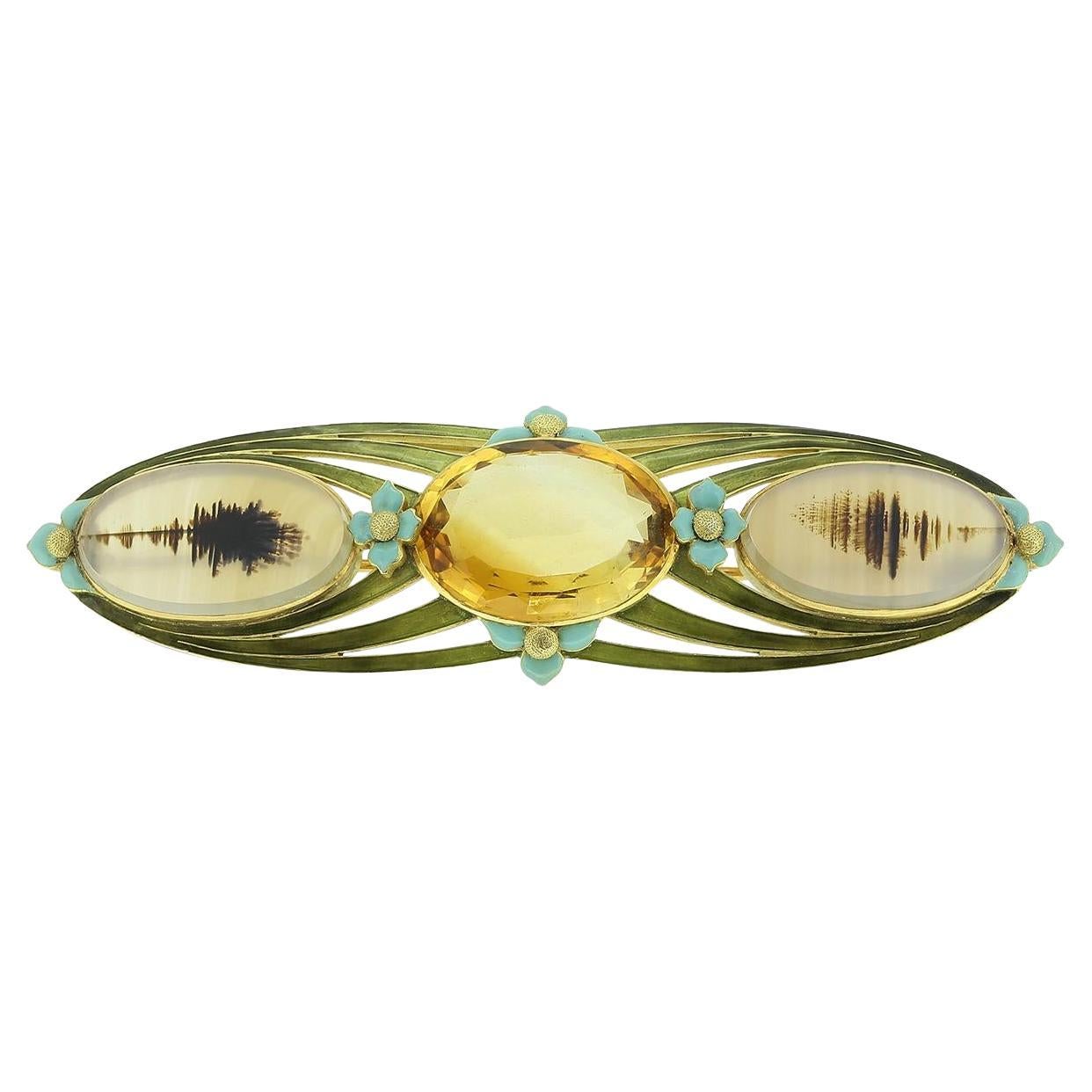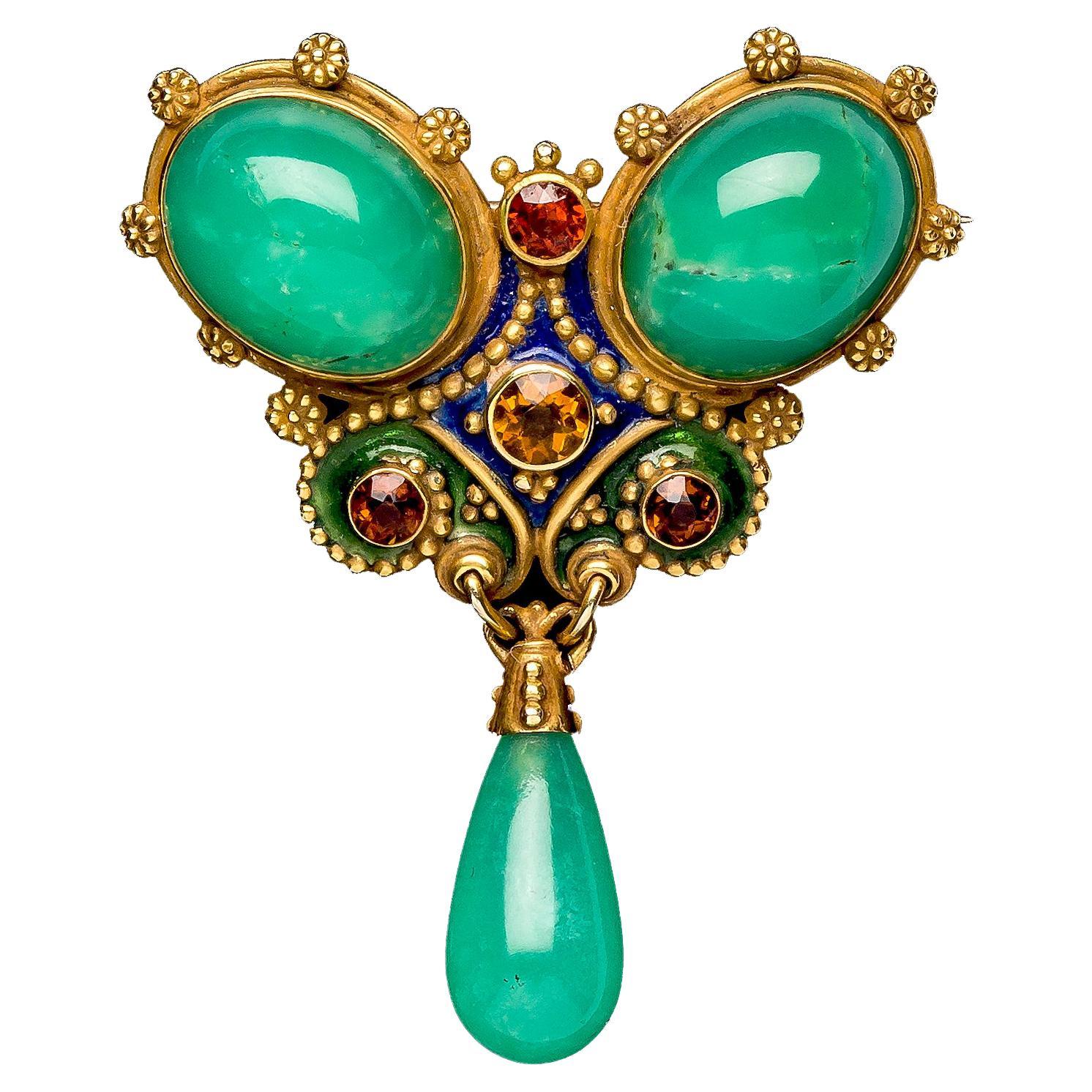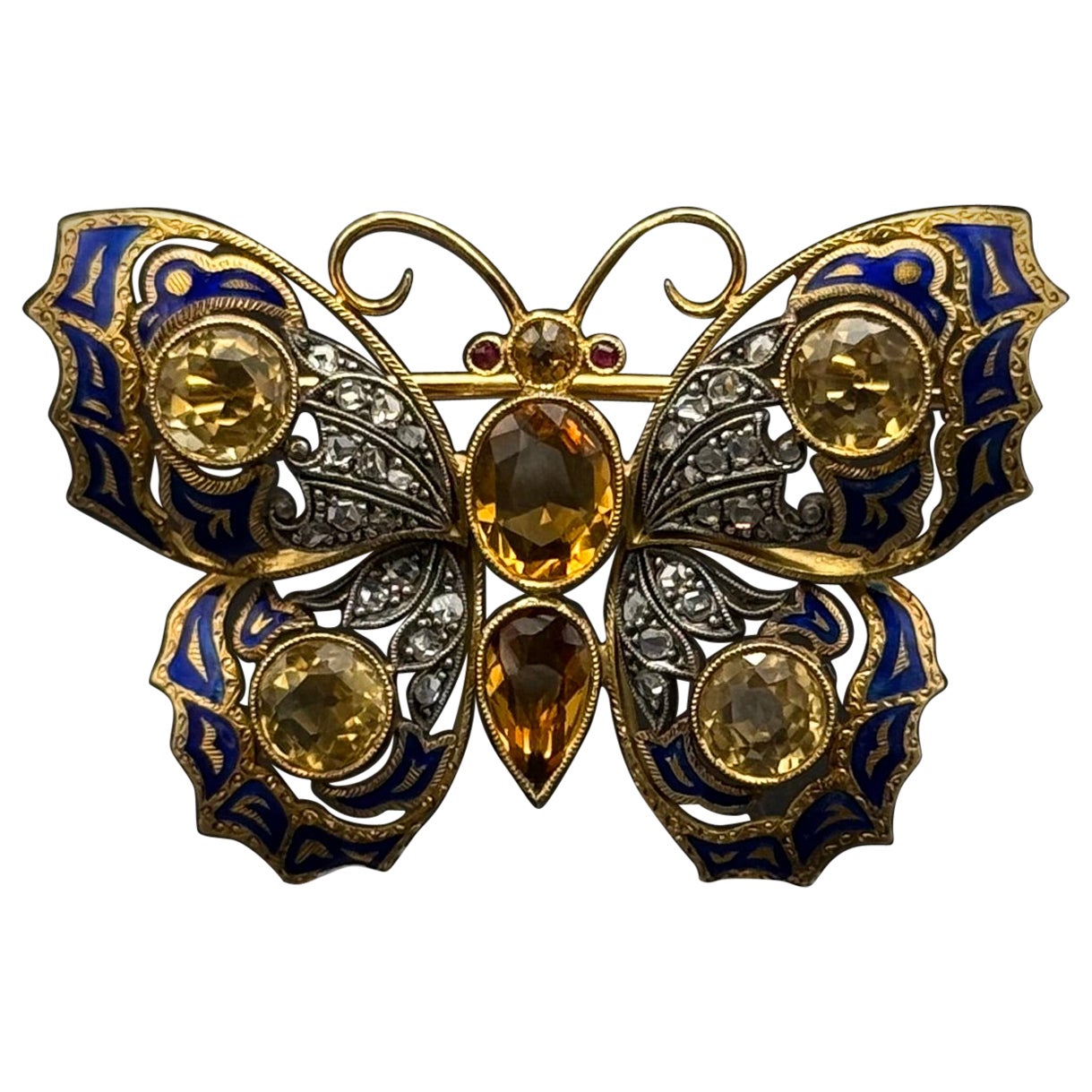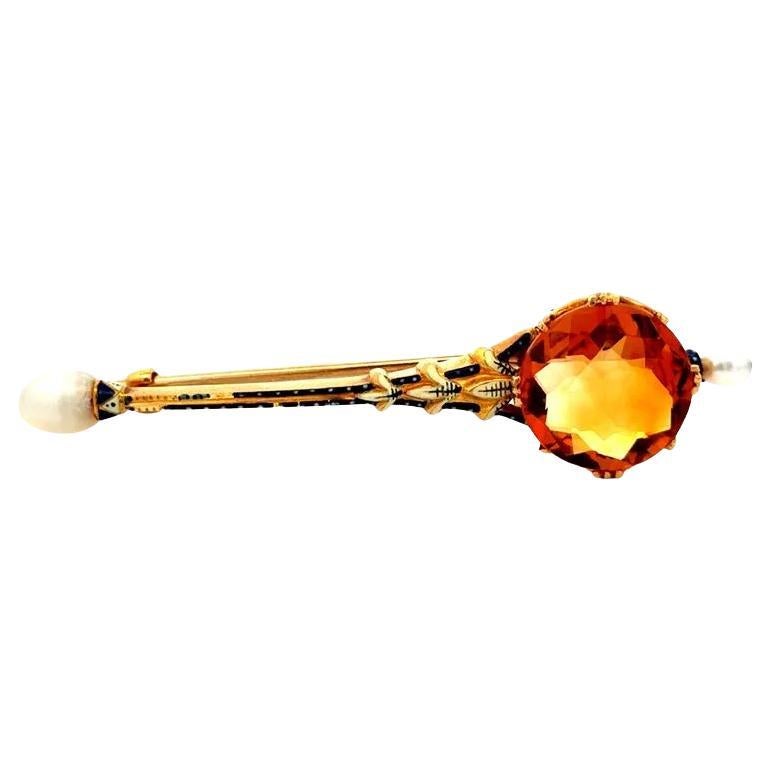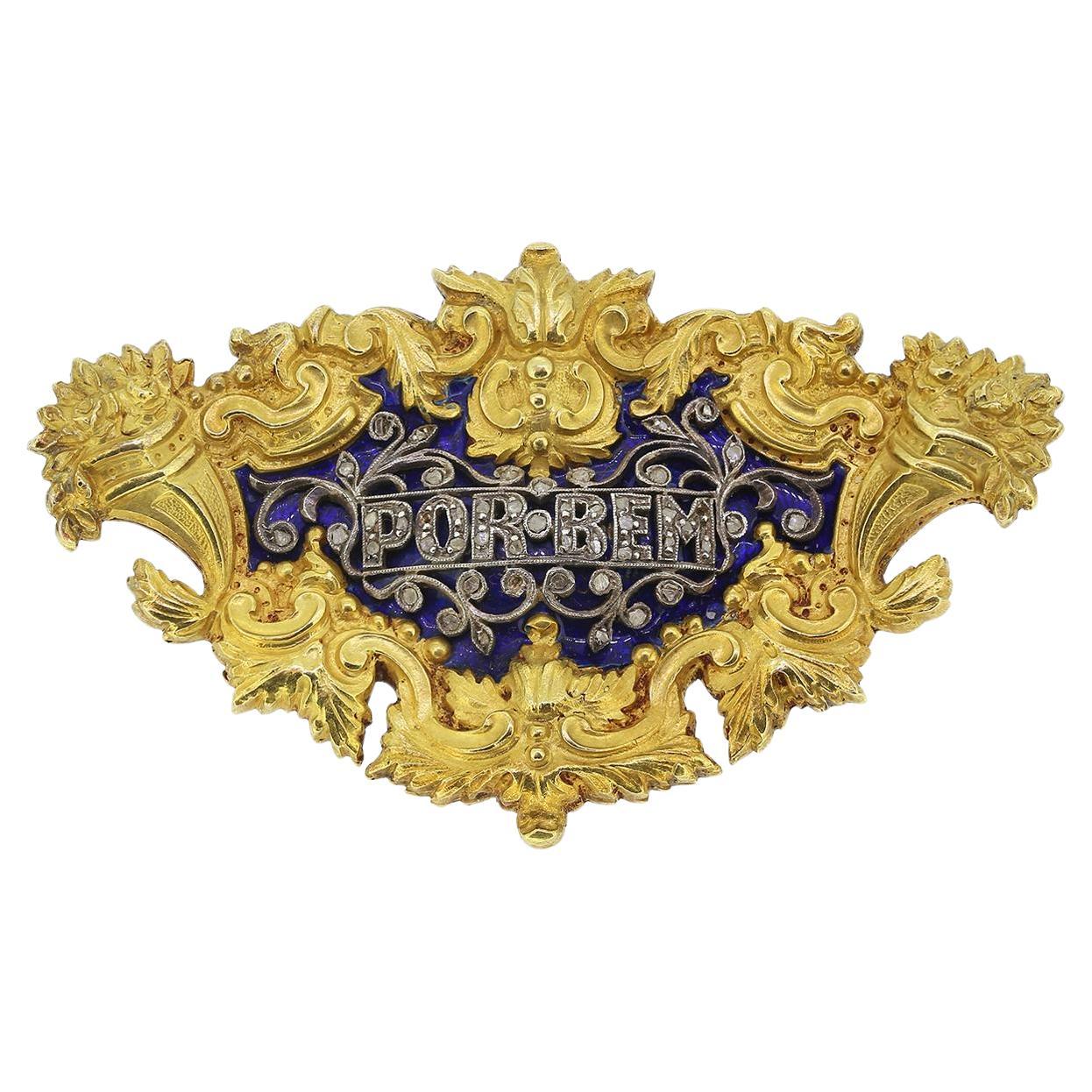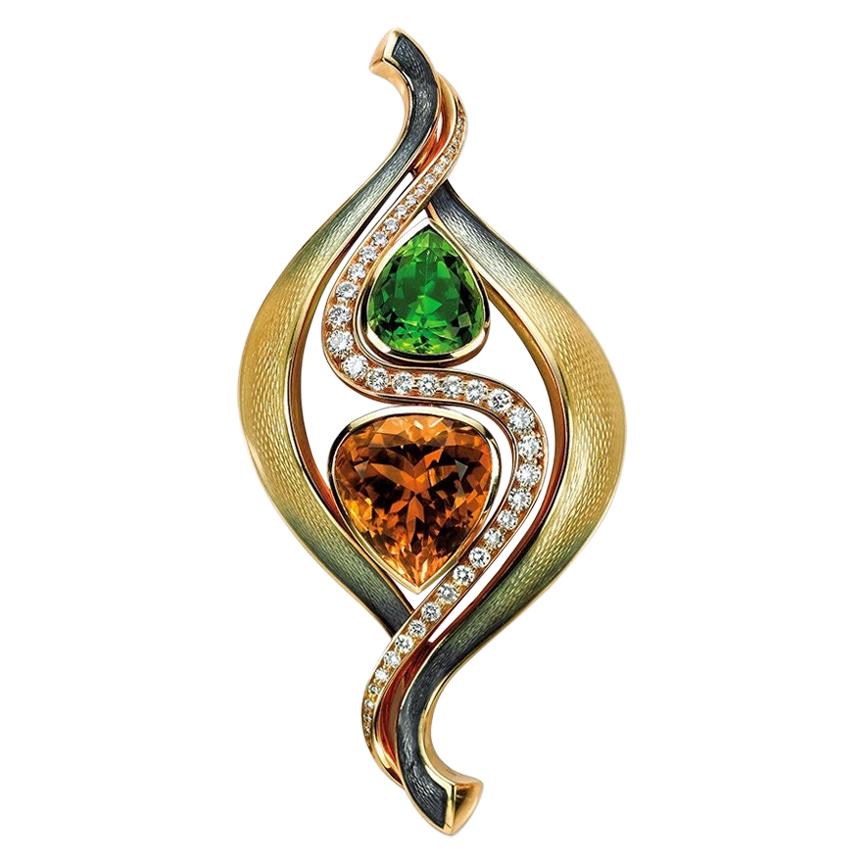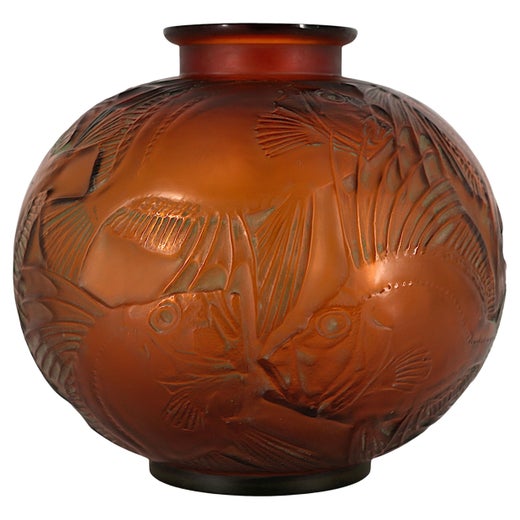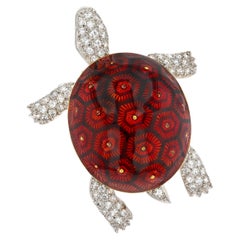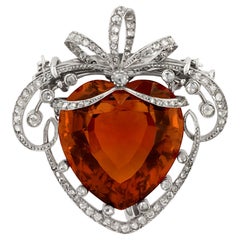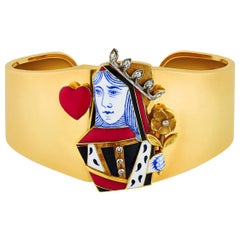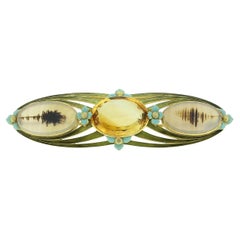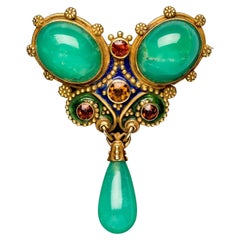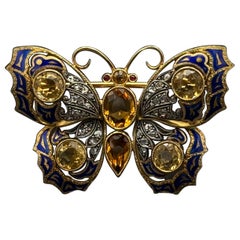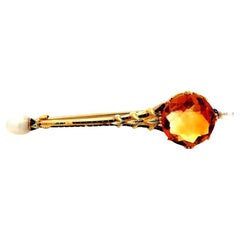Lalique Citrine and Enamel Brooch
About the Item
- Creator:
- Metal:18k Gold,Yellow Gold,Enamel
- Stone:Citrine,Diamond
- Stone Cut:Round Cut
- Weight:10 ct
- Dimensions:Height: 0.75 in (19.05 mm)Width: 3.25 in (82.55 mm)
- Style:Art Nouveau
- Place of Origin:France
- Period:20th Century
- Date of Manufacture:Circa 1910
- Condition:
- Seller Location:New Orleans, LA
- Reference Number:Seller: 31-55701stDibs: LU13516865622
René Lalique
The career of the famed jewelry designer, glassmaker and decorative artist René Lalique spanned decades and artistic styles. Best known today for his works in glass, Lalique first won recognition for his jewelry. He was described as the inventor of modern jewelry by the French artist and designer Émile Gallé, and his luxurious naturalistic designs helped define the Art Nouveau movement. Later as a glassmaker in the 1920s and ‘30s, Lalique designed vases, clocks, chandeliers and even car hood ornaments that were the essence of Art Deco chic. Even now, the name Lalique continues to be a byword for a graceful, gracious and distinctively French brand of sophistication.
Born in 1860 in the Marne region of France, Lalique began his career as a jewelry designer in the last decades of the 19th century. His work employed now-classic Art Nouveau themes and motifs: flowing, organic lines; forms based on animals, insects and flowers — all rendered in luxurious materials such as ivory, enamel, gold and semi-precious stones. By 1905, Lalique had begun creating works in glass, and his style began to shift to a cleaner, sharper, smoother, more modern approach suited to his new medium. His Paris shop’s proximity to perfumer François Coty’s led him to experiment with beautiful perfume bottles. He offered the first customized scent bottles, transforming the perfume industry. By the end of the First World War, the artist had fully embraced Art Deco modernity, devoting himself to new industrial techniques of glass production and designs that manifest the sweeping lines and the forms suggestive of speed and movement characteristic of the style. Lalique’s work looked both backward and forward in time: embracing ancient mythological themes even as it celebrated modern progress.
Late in his career, Lalique took on high profile luxury interior design projects in Paris, Tokyo and elsewhere. He designed decorative fixtures and lighting for the interior of the luxury liner Normandie in 1935, and decorated the salons of well-known fashion designer Madeleine Vionnet. Today, Lalique’s influence is as relevant as it was when he opened his first jewelry shop in 1890. In a modern or even a traditional décor, as you will see from the objects offered on these pages, the work of René Lalique provides the stamp of savoir-faire.
- ShippingRetrieving quote...Shipping from: New Orleans, LA
- Return Policy
More From This Seller
View All21st Century and Contemporary French Modern Brooches
Diamond, White Diamond, 18k Gold, Enamel
Early 20th Century French Belle Époque Brooches
Citrine, White Gold
20th Century Modern Brooches
Diamond, 18k Gold, Yellow Gold, Enamel
20th Century French Retro Brooches
Diamond, Gold, 14k Gold, Enamel
21st Century and Contemporary Italian Contemporary Brooches
Diamond, Labradorite, 18k Gold
21st Century and Contemporary Modern Brooches
Yellow Diamond, Ruby, 18k Gold, Platinum
You May Also Like
20th Century Brooches
Agate, Citrine, Gold, 18k Gold, Yellow Gold, Enamel
Antique Early 1900s American Art Nouveau Brooches
Citrine, Gold, 14k Gold, Enamel
Vintage 1940s Portuguese Retro Brooches
Citrine, Diamond, Ruby, Topaz, Gold, Yellow Gold, Silver, Enamel
Early 20th Century Art Nouveau Brooches
Citrine, Pearl, Gold, 14k Gold, 22k Gold, Enamel
Antique 19th Century Victorian Brooches
Diamond, Gold, 18k Gold, Yellow Gold, Enamel
Early 2000s English Contemporary Brooches
Citrine, Diamond, Peridot, 18k Gold, Yellow Gold
Recently Viewed
View AllRead More
Paul Revere Crafted This Silver Coffee Pot 250 Years Ago
Perhaps best known as a Revolutionary War hero, Revere was also an accomplished silversmith, and this pot is now available on 1stDibs.
Degas Portrayed These Exuberant Ukrainian Dancers with ‘Orgies of Color’
Discovered in Parisian cabarets, the performers reenergized the artist’s practice.
